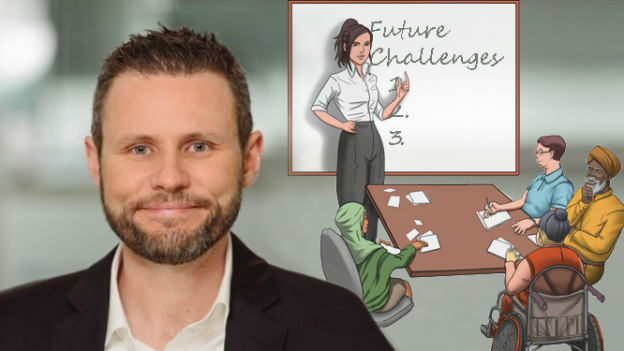The Tactician: Gerard McCarthy, Head of People and Culture, LGIAsuper

What's in a personality type? A while back, we introduced four main archetypes that characterise HR leaders and professionals in their working life. We've since heard from HR leaders who fit the various types, on how their preferences and capabilities shape their approach to their work.
This week we introduce Gerard McCarthy, Head of People and Culture at Queensland-based LGIAsuper, who genuinely enjoys big projects that require a focus on the future – like last year's merger, which has occupied much of his time in the intervening months. But the downside of being a big-picture thinker is that the day to day exigencies of HR work, despite being critical, can feel a lot less interesting in comparison. Here's how he balances the needs of his role.
The point is to tackle the bigger challenges
“HR is a service whose primary role is to assist the organisation achieve its overall objectives. And the best way to do that is to think about the bigger challenges that need to be thought about today, as opposed to the day to day work that needs to be done today. For me, it's about what needs to be put in place – either now, or in the coming weeks or months – to be able to meet the needs of the future. I don't focus as much on what's happening on a day to day basis.”
Planning needs to be bold!
“If you're trying to run any sort of organisation by dealing with what it looks like today, it's going to fail. You really need to understand what the future state should or could look like, and make some bold decisions – now, when I say bold, they're not terribly bold, but they are bold in the context of how the organisation exists today."
"Sometimes what's in operation today may be OK now, but it is not going to be OK for the future.”
...But you'd better be prepared for conflicts
“To me, the Tactician's approach is very much about trying to understand how it should work. The problem with doing that, and the biggest challenge I have found, is that there is an immediate conflict between preparing for the work of the future and doing the work that the job requires right now. Both these things draw on the same resources. So it's all very well and good to articulate what the future looks like, but you have to have a plan in place for dealing with the conflicts that will emerge. And I think this is one thing that HR professionals need to work at understanding.”
Get out of the silo, get some multidisciplinary exposure
“For me personally, one of the things that HR people can do is spend time outside of the core HR function, working with the teams around strategic planning, around financial forecasting, around risk and threat analysis – because that then resets the mind to focus on where the business is going, not what has to be done to sustain today. And I've been very fortunate in my career that I've had the opportunity to work with leaders in a way that focuses on this work, not just responding to their requests when they need to fill a vacancy or manage a team member's performance. It's been that exposure that allows me to see things the way I do.”
His greatest contribution: enabling business
“Organisations are constantly changing and to realise the business objective, you have to be able to change. And oftentimes, when you do that, the composition of the workforce needs to change. So I think my greatest contributions have been in the work that I've done around organisational hierarchy. It's not just redoing the organisation chart: it's about understanding what work needs to be done now versus what we're used to. How should work be structured? How should the organisation be structured to maximise the roles that exist? How do you eliminate the bureaucracy that comes from just growing and adding more roles? There is an elegance associated with designing an organisation chart to respond to the future needs of the organisation. Positioning the organisational structure to take into account the future complexity of work is probably where I've had the most opportunity to make an impact.”
And his biggest exercise in forward thinking currently:
“A merger and acquisition requires all disciplines of human resources to respond and reinvent its way of servicing the business. It is very much about trying to work out whether we can achieve the best of both worlds in the HR discipline, or whether we need to adopt something completely different because complexity doesn't scale. And we need to make sure that everything that we do now is preparing the organisation to be a much bigger, more complex organisation. What does the culture of the organisation need to look like? What steps need to be taken now to drive that culture which may not be realised for years to come? I saw a quote that said: 'The day you plant the seed is not the day you get to eat the fruit.' I feel that's very much my role at the moment."
"I'm possibly not going to see the fruit, but I need to make sure we're planting the right seeds at the right time anyway.”
What's your HR personality type? Drop us a note if you'd like to tell us more.















